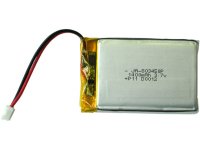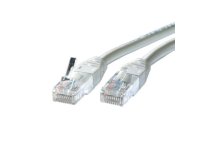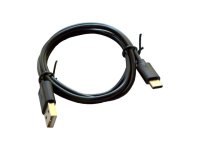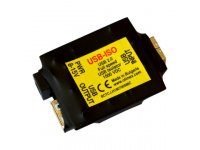≡
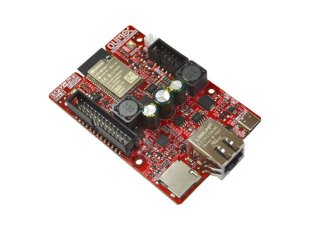



ESP32-POE2




Power Over Ethernet POE Internet of Things IoT board with ESP32 and 25W power delivery WiFi BLE Wired 100Mb Ethernet
| Price | 20.95 EUR |
|---|---|
| 10 - 49 pcs | 18.86 EUR |
| 50 - 10000 pcs | 16.76 EUR |
ESP32-PoE2 is an Open Source Hardware ESP32-powered WIFI/BLE/Ethernet development board with Power-Over-Ethernet feature.
The PoE is handled by TPS2378PW chip that is IEEE 802.3-compliant, including pre-standard (legacy) PoE support. The PoE powering requires at least 37V DC to operate successfully. The board takes power from the Ethernet cable and can be expanded with sensors and more. Perfect solution for Internet-of-Things projects.
ESP32-POE2 operates in the commercial temperature range (0-70) degrees C.
ESP32-POE2 can power external circuits with 24V/0.75A or 12V/1.5A plus 5V/1.5A plus 3.3V/1A up to total of 25W of power output. This is when the board is powered from the Power-Over-Ethernet connector.
Important notice: ESP32-POE2 has no galvanic isolation from Ethernet's power supply, this might be a problem for ground loops. This also means that when you program the board via the micro USB connector the Ethernet cable should be disconnected (if you have power over the Ethernet enabled)! Any board with own external power supply attached to ESP32-POE2 can be dangerous. Consider using Olimex USB-ISO to protect your computer and board from accidental short circuit (do not use external power for the USB-ISO!).
The PoE is handled by TPS2378PW chip that is IEEE 802.3-compliant, including pre-standard (legacy) PoE support. The PoE powering requires at least 37V DC to operate successfully. The board takes power from the Ethernet cable and can be expanded with sensors and more. Perfect solution for Internet-of-Things projects.
ESP32-POE2 operates in the commercial temperature range (0-70) degrees C.
ESP32-POE2 can power external circuits with 24V/0.75A or 12V/1.5A plus 5V/1.5A plus 3.3V/1A up to total of 25W of power output. This is when the board is powered from the Power-Over-Ethernet connector.
Important notice: ESP32-POE2 has no galvanic isolation from Ethernet's power supply, this might be a problem for ground loops. This also means that when you program the board via the micro USB connector the Ethernet cable should be disconnected (if you have power over the Ethernet enabled)! Any board with own external power supply attached to ESP32-POE2 can be dangerous. Consider using Olimex USB-ISO to protect your computer and board from accidental short circuit (do not use external power for the USB-ISO!).
FEATURES
- ESP32-WROVER-E-N4R8 - WiFi and bluetooth module with 4MB flash, 8MB PSRAM
- CE-RED and LVD certification
- Original design by OLIMEX Ltd
- Low power design - 200uA consumption in deep sleep
- Ethernet 100Mb interface with IEEE 802.3 PoE support
- USB-C connector for ESP32 programming
- MicroSD card working in 1 bit mode (3 more GPIOs)
- LiPo battery charger with LiPo battery connector
- Battery level monitor pin on ADC
- External power supply detection pin on ADC
- Total output for external circuits - 25W max, max power distributed as follows:
- 0.75A at 24V or 1.5A at 12V (selectable by jumper)
- 1.5A at 5V
- 1A at 3.3V - UEXT connector
- EXT connector
- User button
- Reset button
- PCB dimensions: (59 x 90)mm ~ (2.32 x 3.54)in
DOCUMENTS
SOFTWARE
Demo software- Simple Ethernet demo for Arduino
- Works with default Arduino for ESP32 if you have troubles refer to this document
- More Arduino examples at our GitHub pages
FAQ
- R28 and R42 get very hot! What are these components? Are they safe? Can I remove it?
- These resistors are required by the IEEE standards. They are used to maintain power signature (MPS). Search online "maintain power signature poe" to get the general idea.
Lack of load causes availability problems when using ESP32 power saving modes - the board would consume less wattage than PoE equipment can detect, which leads to PoE equipment shutting the ESP32 board off.
If you are not using the low power modes of the ESP32 board and the heat from the resistor bothers you, you might try desoldering R28 and R42 and see if that effects your setup negatively. If the board gets shut down, solder them back. Notice that we don't recommend doing so.
- Ethernet doesn't work. Is my board defective?
- Make sure you've selected board variant with PSRAM enabled (this board has WROVER module, not WROOM). Make sure your code defines GPIO0 as Ethernet clock source pin.

